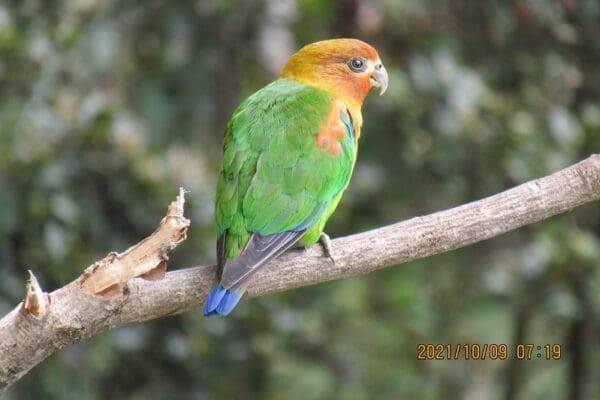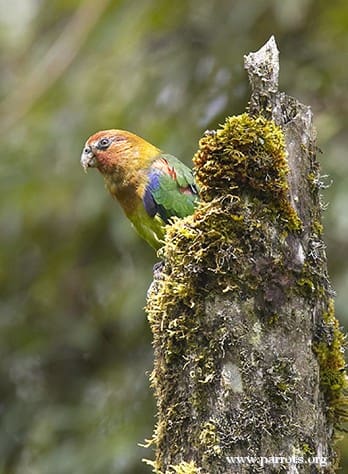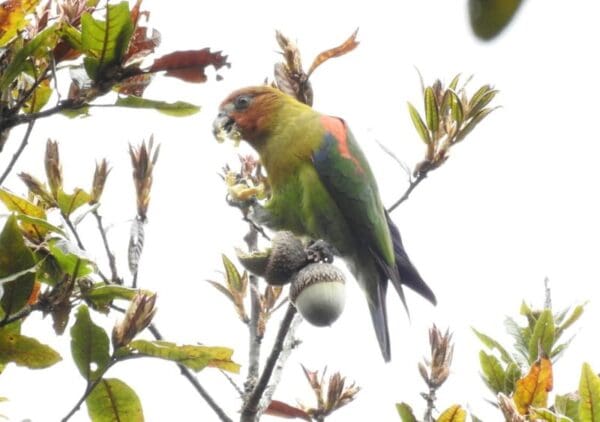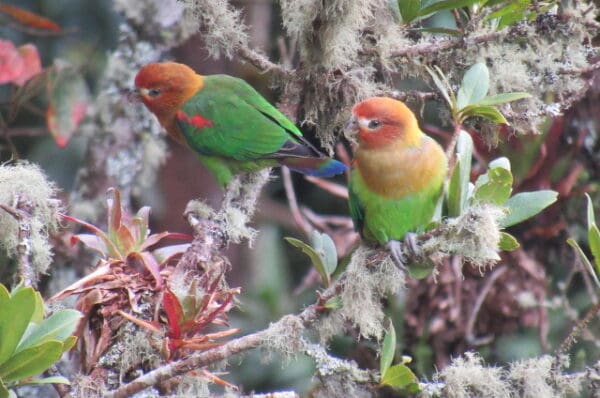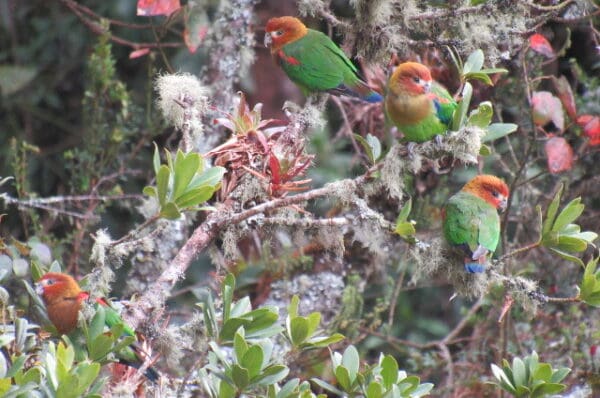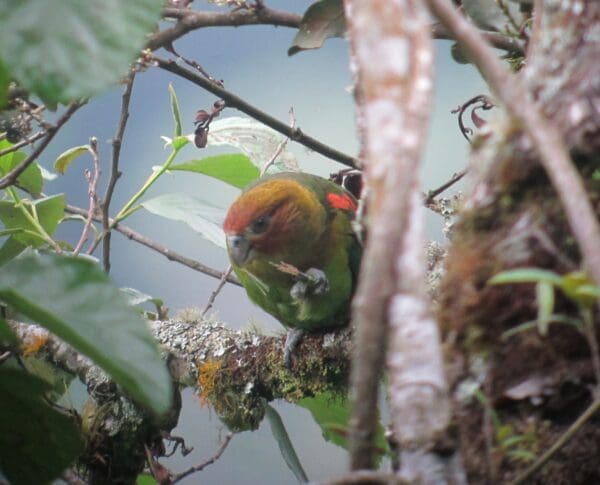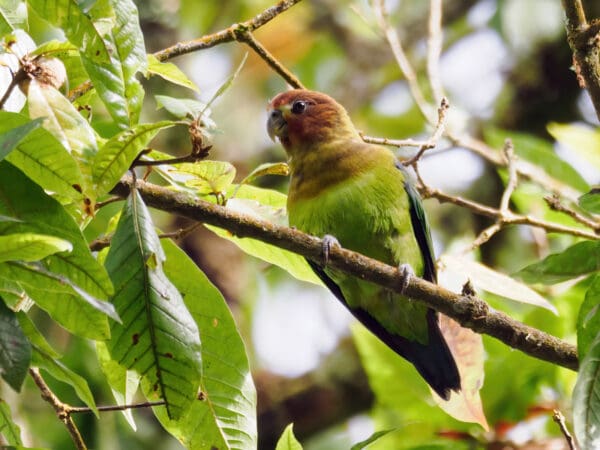Rusty-faced Parrot
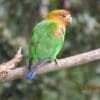
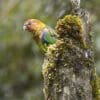
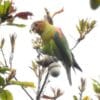
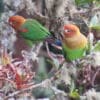
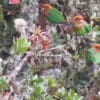
![© Félix Uribe [CC BY-SA 2.0] via Flickr A wild Rusty-faced Parrot clings to a branch](https://parrots.org/wp-content/uploads/1990/11/Rusty-faced-Parrot-lg-Felix-Uribe-100x100.jpg)
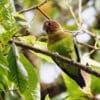
DID YOU KNOW?
This species’ population is larger than previously thought, however, it consists of scattered groups that are going through continued declines.

Hapalopsittaca

amazonina
Size:
26 cm (10 in)
Weight:
97-115 g (3.4-4 oz)
Subspecies including nominate:
three: H.a. amazonina, H.a. theresae, H.a. velezi
Colour Adult:
H.a. amazonina: Both adults forehead orange/red turning to brown/red on forecrown; pale yellow lores; chin and area before cheeks orange/red; longer feathers of ear coverts and area behind cheeks olive in colour, shafts streaked pale yellow; olive throat and breast; red bend of wing to lesser wing coverts; carpal edge and lesser wing coverts soft red; tail brown/red tipped with purple/blue. Beak horn in colour with blue/grey at base of upper mandible. Eye green/yellow.
H.a. theresae: Both adults forehead, chin and area before cheeks darker than in amazonina; ear coverts and area behind cheeks darker than in amazonina; throat and upper breast rusty olive/brown.
H.a. velezi: Both adults nape to area behind neck yellow/olive; green mantle; pale blue and pink carpal edge.
Colour Juvenile:
As in adults but duller; with duller red and yellow markings on head; yellow on feather shafts on ear coverts and area behind cheeks minimal or absent; tail darker.
Call:
Calls in flight are said to be loud and metallic, and when perched metallic and disyllabic.
More Information:
Content Sources:
CITES
BirdLife International
Cornell Lab of Ornithology/Birds of the World
Parrots: A Guide to Parrots of the World, Juniper and Parr, 1998
Parrots: Status Survey and Conservation Plan 2000-2004, Snyder, McGowan, Gilardi and Grajal, 2000.
Parrots of the World, Forshaw, 2006. 2010 edition
Captive Status:
Not found in aviculture.
Longevity:
—
Housing:
—
Diet:
—
Enrichment:
—
Nest Box Size:
—
Clutch Size:
Not recorded.
Fledging Age:
—
Hatch Weight:
—
Peak Weight:
—
Weaning Weight:
—
World Population:
2500-10,000 mature individuals, decreasing.
IUCN Red List Status:
Near Threatened
CITES Listing:
Appendix II
Threat Summary:
A BirdLife “restricted-range” species. Generally rare throughout its range; the one site where it was recorded as common in Colombia has long since been deforested, and total populations of all three subspecies are likely to be low. Forest clearance in Venezuela is ongoing and rapid and two main protected areas where it occurs, El Tamá and Sierra Nevada National Parks, are threatened by logging. Over the past three generations (13.5 years), 1.5% of tree cover has been lost within its range. As the species prefers wet cloud forests, habitat degradation is likely exacerbating the rate of forest loss, so that the population decrease is larger than the rate of tree cover loss alone. Therefore, the population decline is placed in the band 1-9% over three generations.
Range:
H.a. amazonina: W Venezuela and slopes of Cordillera Oriental in W Colombia.
H.a. theresae: W Venezuela from N Tachira north to C Trujillo.
H.a. velezi: W Colombia, along western slope of Cordillera Central and possibly on eastern slope.
Habitat:
Found in wet epiphyte-rich cloud forest, and along forest edge; in temperate zone, sometimes descending to upper subtropical forest; also elfin forest and taller stands with broken canopy. Up to 3500 m (11,480 ft).
Wild Diet:
Forages for Phytolacca berries and fruits of Clusia and mistletoe.
Ecology and Behaviour:
Mainly forages in canopy. Social, found in pairs or flocks of up to 25 individuals.
Clutch and Egg Size:
Not recorded.
Breeding Season:
Not recorded.
Related Links:
—
